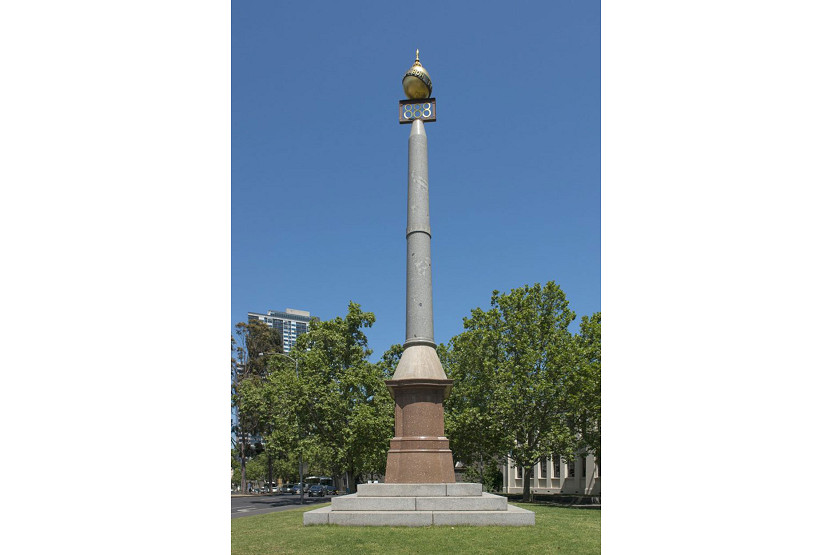Hotels of North Melbourne
By Felicity Jack – Hotham History Project
Standing at the corner of Arden and Abbotsford streets, the British Hotel was licensed on June 29, 1865. Four years later, in 1869, the Prince Charlie opened on the diagonal corner of the same streets.
Walking east along Arden St, there was the Sunnyside (corner of Curzon St, licensed in September 1868) and the Limerick Castle (on the corner of Errol St, licensed in 1863). The Loughmore Castle, the first on the street to receive a licence in 1858, and the Athletic Club, first licensed in 1873 under the name the Vale of Avoca, were both on the southern corners of Leveson St.
It is notable that all these hotels were situated on a corner, possibly to make them more visible to passing customers but also giving the publican a good view of who was entering.
The Athletic Club, Loughmore Castle and the Sunnyside were all deprived of their licences as a result of the 1904 Local Option Poll that had been set up as a result of a strong temperance movement determined to restrict the sale of alcohol. The criteria for retaining a licence under the Local Option Court, set up to implement the results of the poll, included the condition of the building, facilities provided, and the standard of management.
Today the Limerick Arms is the only hotel that is still trading.
Another round of pub closures took place in 1925, and the Prince Charlie lost its licence in that year because of its proximity to other hotels. It’s likely that the British Hotel took pains to spruce itself up. The following advertisement appeared in the May 25, 1925 edition of the Geelong Advertiser:
“This unrivalled establishment has been redecorated and may fairly challenge comparison with any house in the southern hemisphere. Luncheons from 11am till 3. Suppers all hours. The bill of fare embraces all the delicacies of the season – joints, fish, fowl, game, soups and entrees. Charges strictly moderate.” – H. R. Gosling.
The September 28, 1938, edition of the Herald called for tenders for the remodeling of the hotel, which entailed extensive alterations to the ground floor. It was to include two new bars, a bottle department, a new lounge, new entrance porch and public and staff conveniences. It was also to receive a new hot water service and the whole of the building was to be redecorated.
There were a few incidents at the hotel that made it into the local and national newspapers. Two related to gas explosions. The first, on a Saturday evening in June 1891 occurred when a patron, John O’Keefe, of Canning Place, lit a match, causing damage valued at £10. The window fittings were damaged, and the ceiling was blackened. John had injuries to his face and hands but was discharged from the Melbourne Hospital on the same day. The fire was extinguished before the fire brigade arrived.
The second explosion occurred on the morning of September 23, 1950, when the cook lit one of the gas jets. There was an explosion in which Mavis Bohan was thrown violently against the well and she was struck by flying metal.
An incident that received a lot of attention was the theft of 47 bales of wool valued at £11,457 that occurred on March 8, 1950. The driver, Frank Brady, stayed regularly at the hotel and would leave his truck outside. He checked it before he went to bed at 9pm but he found it had gone when he checked again at 7am the next day. A trial was held of four people in October of that year, but it’s not known if they were found guilty or if the wool was retrieved.
In the years just before and after the Second World War the British Hotel was a regular fielder of a football team that played against other hotels to raise money for charity. Another was the Laurel Hotel on the corner of Dryburgh and Wood streets. This provided excellent publicity for the hotels as well as benefitting charities.
The British Hotel closed sometime in the late twentieth century and was converted into rental apartments.
A study conducted by heritage consultants Lovell Chen for the Melbourne City Council has recommended that the area covered by the existing heritage overlay be extended to include the former British Hotel. The recommendation was based on the building being relatively intact and presenting as a 19th century hotel “despite some alterations, including additional level to the rear wing fronting Abbotsford St, and some changes to openings”.
Blair Gardiner is a member of the Hotham History Project who has done a lot of research into the early hotels of North Melbourne and much of the material in this article has been provided by him. He will give a talk on the subject in September, date and venue to be arranged. •
Further details will become available on hothamhistory.org.au

Jo Ryan unveils Ordered Chaos at Blender Studios






 Download the Latest Edition
Download the Latest Edition